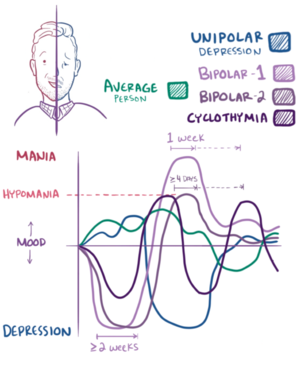Lateral Wiki – A Digital Garden
Resources::
[[../www-old/adhd_rev2]] often has cyclothymia as a comorbidity.

tends to occur in conjunction with [separation anxiety]
- notes::
- This relates to the article [[Avhengighet, avvisning og panikk]] from [[WebPsykologen]] and I can relate :(
- notes::
Other issues that tend to co-occur with cyclothymia include [[social anxiety]], fear of rejection and a tendency toward hostility to those connected with past pain and rejection. People with cyclothymia tend to seek intense interpersonal relationships when in a [[hypomanic]] state and isolation when in a depressed state.[5] This generally leads to short, tumultuous relationships.[5]
Cyclothymia is often not recognized by the affected individual or medical professionals due to its ostensibly mild symptoms. In addition, it is difficult to identify and classify. ... Cyclothymia is also often confused with [[borderline personality disorder]] due to their similar symptoms,[8] especially in older adolescents and young adults.
Most people with the disorder present in a depressive state, not realizing that their hypomanic states are abnormal.[1] Mild manic episodes tend to be interpreted as part of the person's personality or simply a heightened mood.
Cyclothymia has been conceptualized in a variety of ways, including as a subtype of bipolar disorder, a temperament, a personality trait, and a personality disorder.10 There is also an argument that cyclothymia should be considered a neurodevelopmental disorder